Wondering what plants are safe for crested geckos? Read on.
Crested geckos are an arboreal species of geckos that spend most of their lives in plants and trees. When you bring one of these amazing little reptiles home, you want to set up an enclosure that is as natural looking as possible.
That includes adding plenty of plants. You can add live or artificial plants as long as they are safe for your pet, offer plenty of hiding places and they can climb on them.
They also need to be safe, so here is a list of 33 types of plants that are safe for crested geckos.
Table of Contents
Crested Geckos Need Plenty of Plants
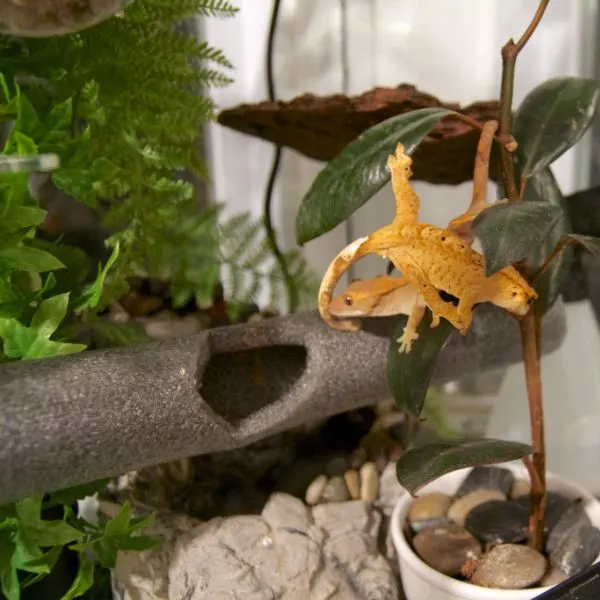
Cresties will sometimes explore on the ground of your enclosure when looking for food—especially if there are insects to eat down there—or they simply want to check it out. The majority of the time though, they will be happiest among the foliage, hiding from predators, or escaping bright light.
More benefits of having live plants in the tank include maintaining the correct humidity in the tank, creating a more natural feeling environment, and some plants your geckos may even nibble on. Plants also provide ways for your crestie to exercise as it climbs all around.
Having live plants can be more of a challenge though. Multiple plants together need to be compatible. Some plants will grow fast and vigorously so they may outcompete others. Live plants also have different lighting, moisture, and fertilizing needs.
Not all plants are good for crested geckos though. Some can be toxic—cresties are omnivores and will often nibble on some plant leaves—and others can harm the delicate crestie skin.
To help take out the guesswork here is a list of safe plants for your crested gecko:
Safe Plants for Crested Geckos
1. Pothos
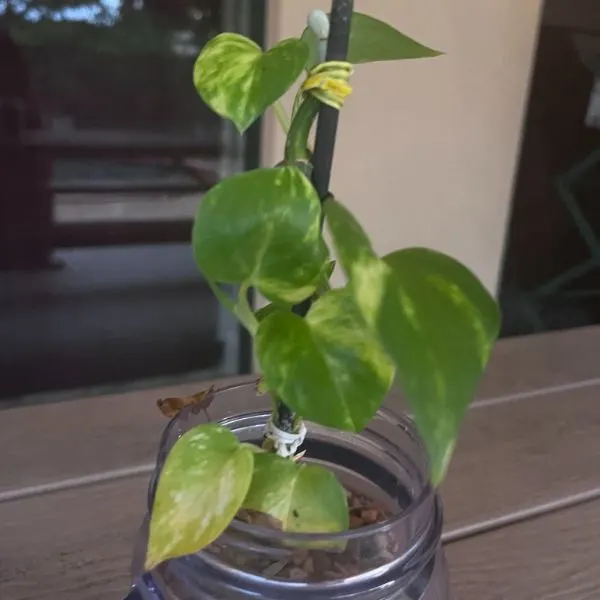
Pothos is a fast-growing vine that has big leaves your gecko can climb on or hide under.
It’s a great low-maintenance plant that will grow in nearly any light conditions or humidity level. It requires slightly moist soil and will be brighter if it gets more light, but that’s not a requirement for hardy growth.
2. Bird’s Nest Fern
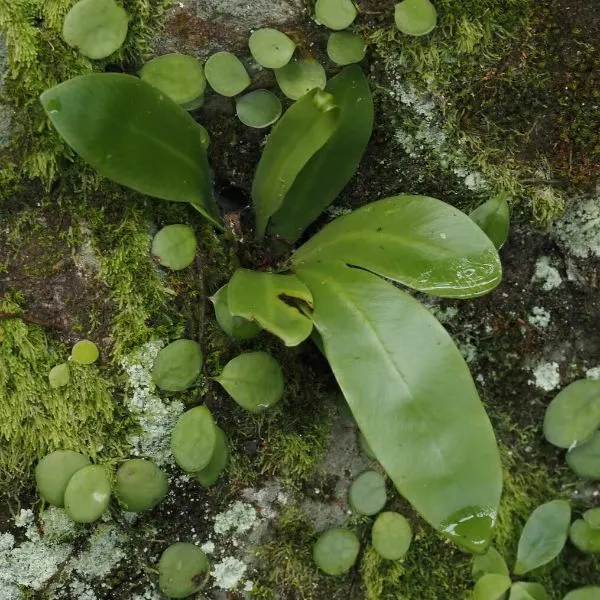
This plant is named because the foliage grows in such a way that it can resemble a bird’s nest.
It grows quickly and can spread out nicely. This plant is better to be situated along the bottom to the middle of the tank as it provides plenty of hiding places, but it typically doesn’t hold the weight of a full-grown gecko.
As far as care, the bird’s nest fern will need some trimming to keep it from getting too large. It can go without water for a while, but it also handles the humid environment a crested gecko needs.
Overall, the bird’s nest fern is a great plant for easy care and providing hiding places.
3. Pink Quill
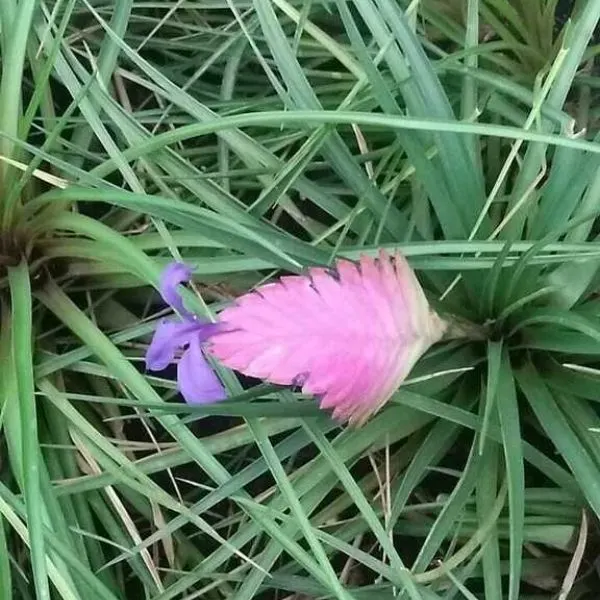
For a bright splash of color, you can’t go wrong with the pink quill.
It has pink branches and bright green fronds and will produce purple flowers for an even brighter pop of color. It is also sturdy enough to hold the weight of your gecko as it climbs among the foliage.
Geckos like to eat pollen and nectar, so if your crestie likes to munch on the violet flowers, it’s okay as this plant will not harm your pet.
This plant requires a bit more light and needs to be watered about once a week, but that’s about all the maintenance you’ll have to provide for the pink quill.
4. Spider Plant
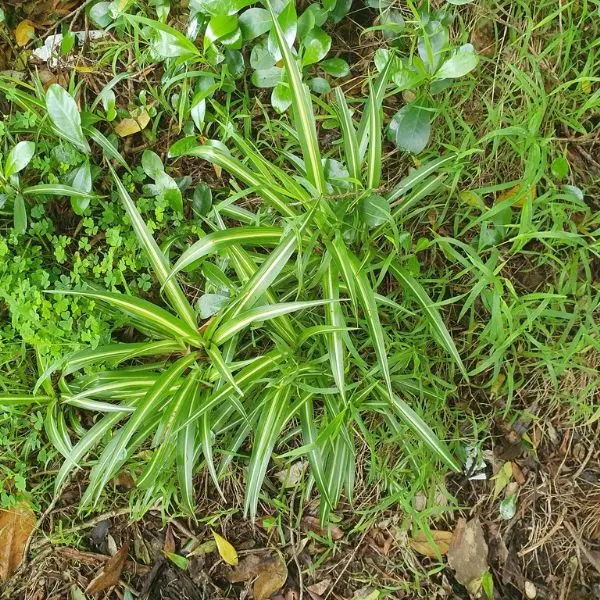
Spider plants are known for their extraordinary ability to filter the air. They are often found in hanging baskets wherever plants are sold which is a great way to display them in your terrarium.
Spider plants will also occasionally clone themselves by sending out runners with miniature spider plants hanging off them. These can be picked off and planted to make more spider plants.
The thin, blade-like leaves won’t hold the weight of your gecko, but they may like to hide in the hanging pot underneath the foliage. Just be sure to keep spider plants away from the basking area, as the temperature may be too hot for them.
5. Chinese Evergreen
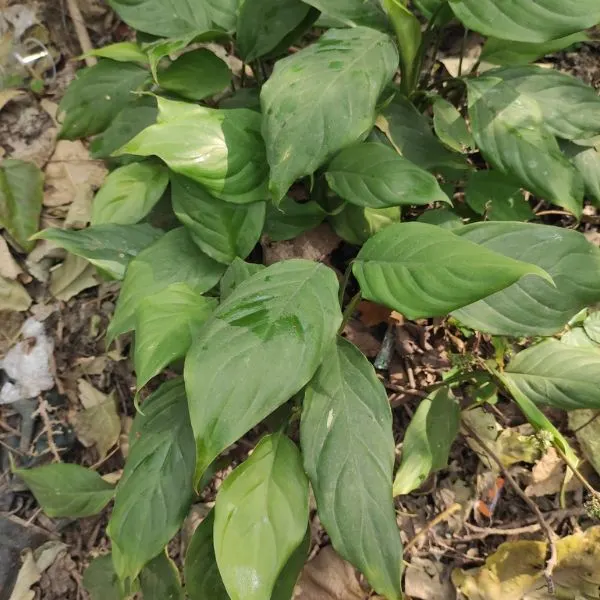
The Chinese evergreen is a tropical plant that has a wide array of bright colors.
It is low-maintenance, doesn’t need a lot of water, and can stand up to geckos climbing all over it. The Chinese evergreen does well with medium light and can handle the humid environment your geckos need.
It is a fast-growing plant so it should be planted in the back of your enclosure. These plants tend to take over so you’ll either only need to plant this one type of vegetation or spend a little time thinning them out on occasion.
6. Arrowhead Vine
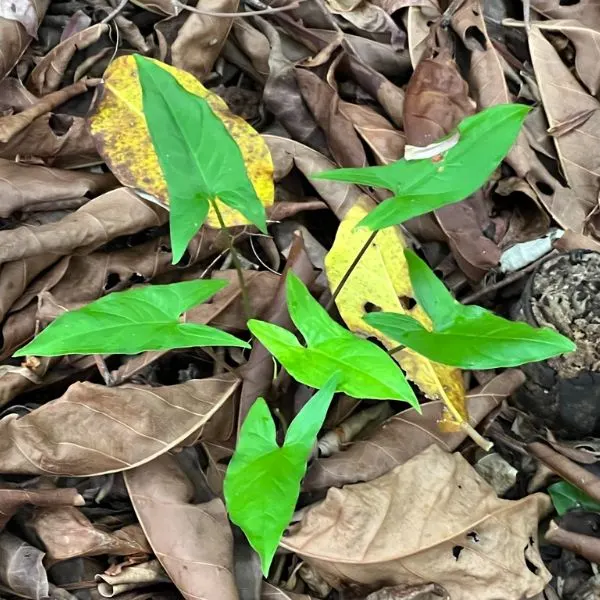
For a strong vine, your gecko can climb on and will climb up the tank itself, you can’t go wrong with the arrowhead vine. This plant starts out with big arrowhead-shaped leaves on single stalks but as it gets older it will send out vines that can climb up branches.
The wide leaves offer shade and hiding places as well as large platforms for your gecko to climb on. The arrowhead vine works well with temperatures that are healthy for your gecko, but the roots need to dry out between waterings.
Because of this, it will probably work best as a potted plant in the enclosure.
7. Pillow Moss
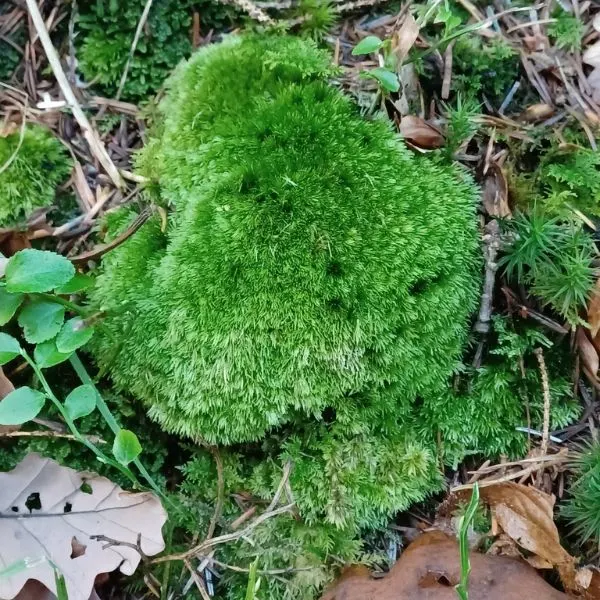
Pillow moss can be used to fill in between larger plants or to provide a soft ground covering for your gecko when it wants to explore along the floor of the enclosure. This plant grows into little ball-shaped mounds that look like fluffy, green pillows.
It does great in a humid environment and prefers moist soil. It’s a very low-maintenance plant that will not require trimming and will not aggressively compete with the roots of other plants.
8. Polka Dot Plant
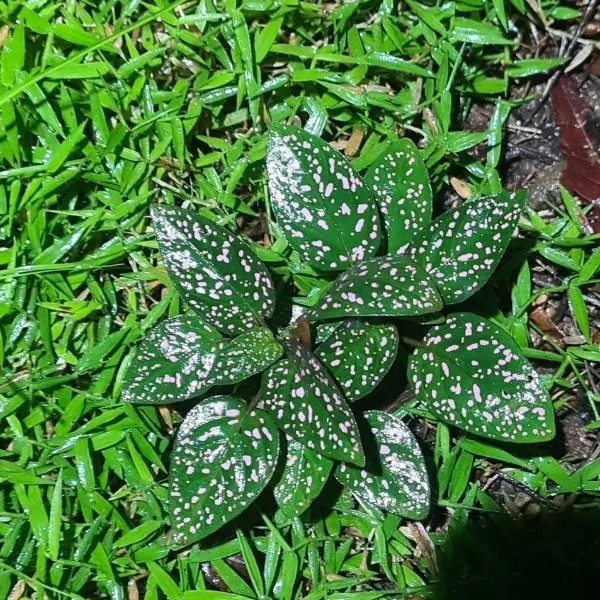
These plants look like small, upright foliage plants with paint spilled on them. For a splash of color and a small plant that will cover the ground, polka dot plants are perfect.
These plants love the temperatures and humidity your cresties require so they make great companion plants. They don’t typically grow more than a foot tall and will provide a dense ground cover if you let them go.
To keep this plant contained, you’ll need to trim it occasionally, and it likes moist soil. Other than trimming and watering, this plant is very low-maintenance.
9. Nerve Plant
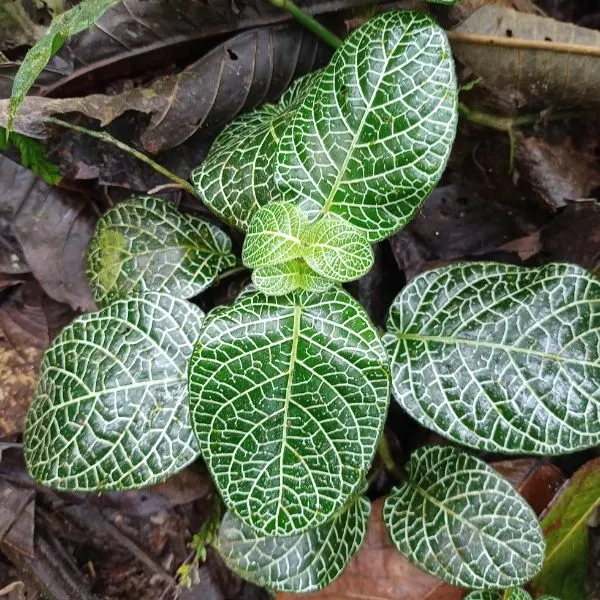
The nerve plant is a bold foliage plant that has brightly colored “veins” throughout. It’s perfect for the humid environment crested geckos thrive. The nerve plant needs high humidity and damp soil to grow properly.
It doesn’t get tall and can spread out about 12 to 18 inches if left to grow. They can get “leggy” but a quick trim will keep the nerve plant bushier.
Occasionally this plant will sprout small, insignificant flowers, but it’s rare and they are nothing outstanding.
10. Bromeliads
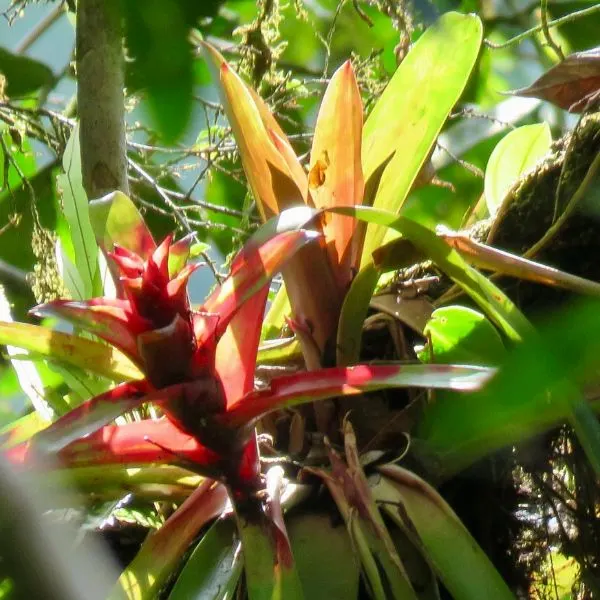
These plants provide plenty of color and variety in a crested gecko environment.
They often catch water in the middle “cups” of the plant that your crestie can drink out of. The leaves and flowers are tough and strong enough for any crested gecko to climb all over.
They can be grown as air plants or placed in well-draining soil. Bromeliads often get all the nutrition and water they need by collecting it between the petals.
Bromeliads need bright light, so plant them near a light source, but don’t let the roots stay wet. In the wild, these plants grow on other trees, much the same way wild orchids do.
In fact, they can be grown well in a loose orchid potting mix of bark and sphagnum moss. Occasionally bromeliads need the water cleaned out of their “cups” as it can get stagnant, and often insects will drown in the tiny pools.
This makes potting them a good choice because it’s easy to clean the stagnant water.
11. Earth Star
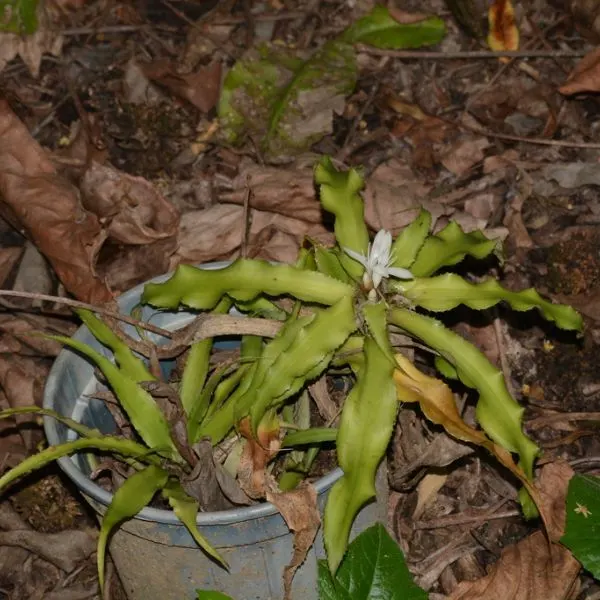
The earth star plant is a wavy-leafed plant that is in the same family as bromeliads but doesn’t let water stand in the middle of its leaves. When watering this plant only water the soil around it.
These plants don’t get very tall, but they can spread up to two feet wide under the right conditions. The long, spreading leaves provide plenty of hiding places near the ground.
Soil for these plants should be a potting mix combined with equal parts of sphagnum moss or sand so it drains well. They like indirect light and moist soil.
Earth star plants will flower once in their lifetime, and soon after they start to die. They may live several years before flowering, but once that happens, they have reached the end.
Cresties can feed on nectar and flowers without any harm.
12. Maidenhair Fern
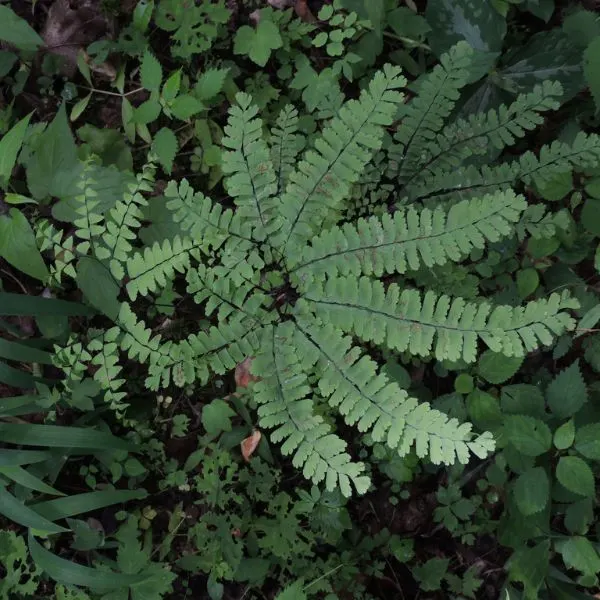
Maidenhair ferns can grow between one and two feet tall and wide.
They produce fine, lacy leaves on thin fronds. Geckos who try to climb on these plants will often sink into the plant where they can easily hide among the fine fronds.
They work well in hanging baskets if you want some vertical visual appeal. These plants love humidity, so a crested gecko habitat is perfect for maidenhair ferns.
13. Zebra Plant
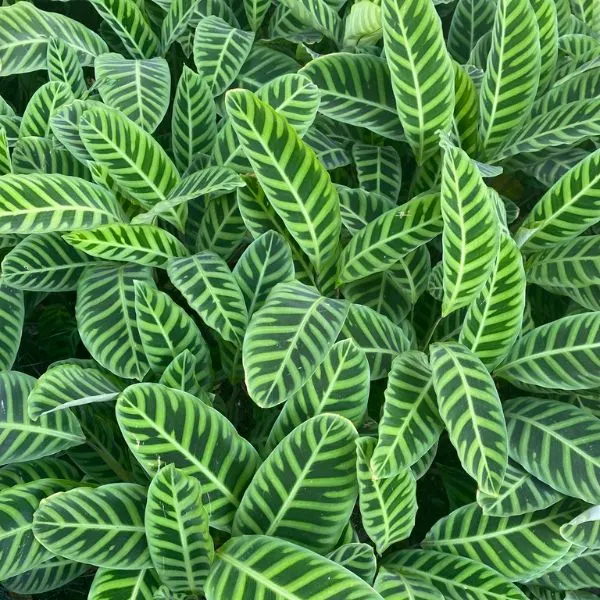
The zebra plant is a slow-growing vertical plant with broad, dark green leaves that are complimented with white veins. At maximum height, the zebra plant stretches up to three feet tall.
In summer or fall, these plants will sprout a few golden-yellow flowers. Once these flowers are spent, trim them off to keep the plant healthy.
Zebra plants require high humidity and moist soil, so they should do well in the crested gecko enclosure. The leaves are big enough to offer hiding places and hold the weight of your gecko when it climbs on them.
14. Air Plants/Tillandsia
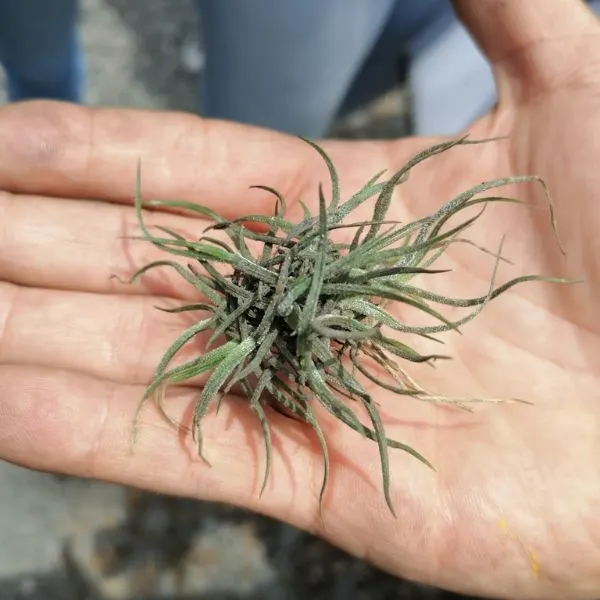
In recent years these air plants have skyrocketed in popularity and can be found nearly everywhere.
They are great choices for adding interest to your crested gecko enclosure. They can be placed directly on the tank, hung from the top, or placed on branches.
They do well in warm and humid conditions that your crestie loves. Wherever you have places your other plants can reach, just add a few air plants for added visual interest.
15. Peace Lily
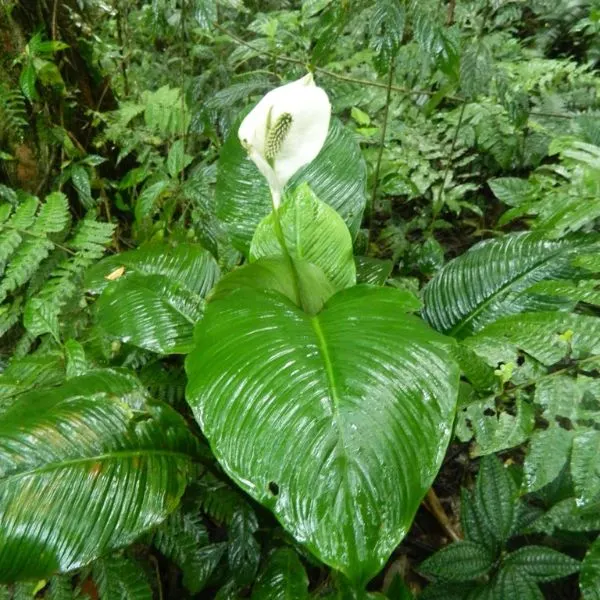
Peace lilies are a great companion plant for your crested gecko. They can grow up to four feet tall, and produce deep green, broad leaves perfect for climbing on and hiding under.
Peace lilies can survive the humid environment easily enough, but the soil needs to be able to dry out between waterings. They hate to have constantly wet roots, so they may do best in pots inside the enclosure.
16. Creeping Fig
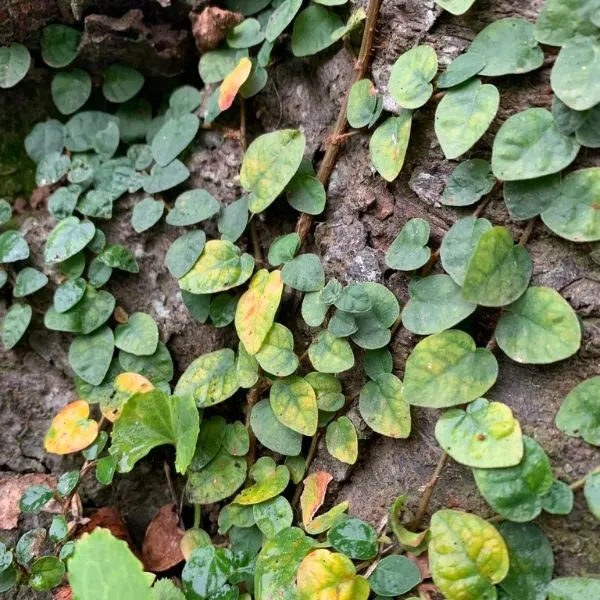
The creeping fig vine is great at the back of your enclosure. It will climb up any surface—it’s called a creeping fig for a reason—so it’s great for decorating. Creeping figs thrive in humid environments.
The small leaves of the creeping fig may not hold the weight of a crested gecko, but if the vines get thick enough your crestie can hang out on them.
These plants grow fast and vigorously, so they will require more pruning than other plants. Other than trimming, this plant is an easy-growing variety for your tank.
17. Lemon Button Fern
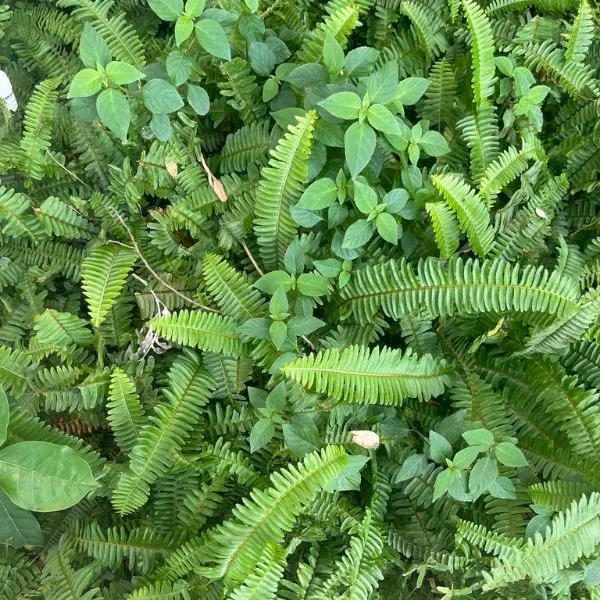
These ferns are a bit hardier than other ferns, so if you’ve had trouble keeping others alive, then the lemon button fern may be the fern for you. It’s smaller than Boston fern plants, and it will give off a faint, fresh, lemony scent.
The lemon button fern can handle the high humidity of a crested gecko tank and likes to grow in moist soil, so your tank will be a perfect environment for this little fern.
18. Dracaena
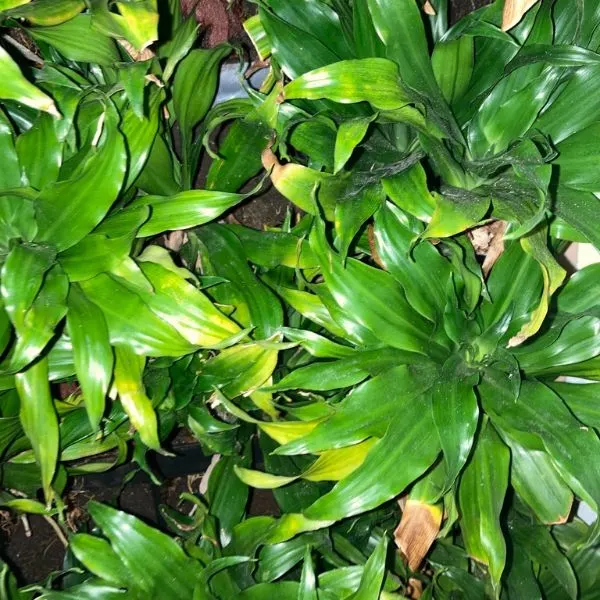
These vertical growing plants offer plenty of climbing for your geckos. These beautiful plants with their striped leaves offer beauty wherever you place them.
Dracaena like warmer temperatures, but need to have well-draining soil. If the roots stay wet all the time the plants will start to struggle.
It’s much less picky when it comes to lighting as it can deal with either high or low light settings.
19. Petra
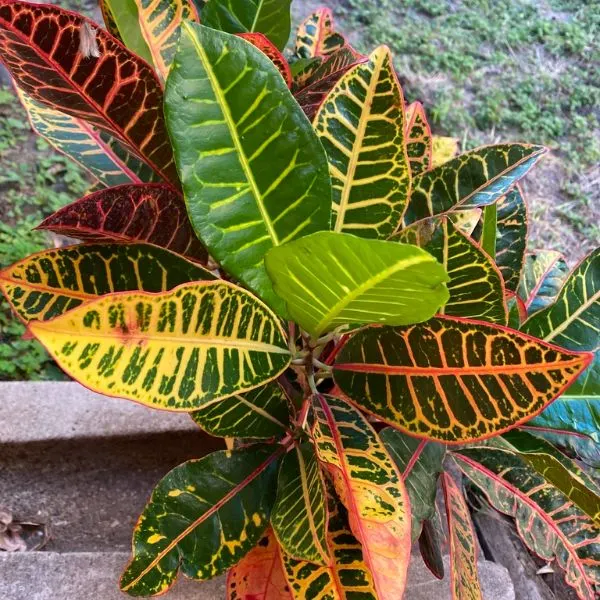
The petra is a broad-leafed plant that has bright, bold colors. They are best planted in the middle of the enclosure because they can grow quite large with the right care.
These plants are great for climbing as the leaves are thick and sturdy, and the stem can support several crested geckos.
Petra plants love the humidity in a crested gecko environment, but their roots need to dry out between waterings. They also like bright light but can deal with lower light over time.
Often when they are transplanted, many of the leaves will drop, but they should regrow quickly.
20. Dwarf Umbrella Tree
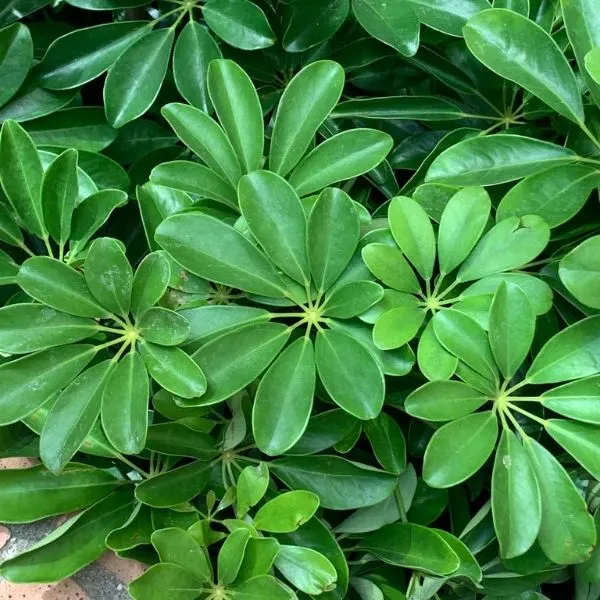
The dwarf umbrella tree is a great tree for your cresties.
It is a strong growing plant that can stand up to constant climbing and high humidity. It works in low or bright light, but it needs time to dry out between waterings.
The dwarf umbrella tree can be trimmed to keep a certain shape or to prevent it from growing too large.
21. Ponytail Palm
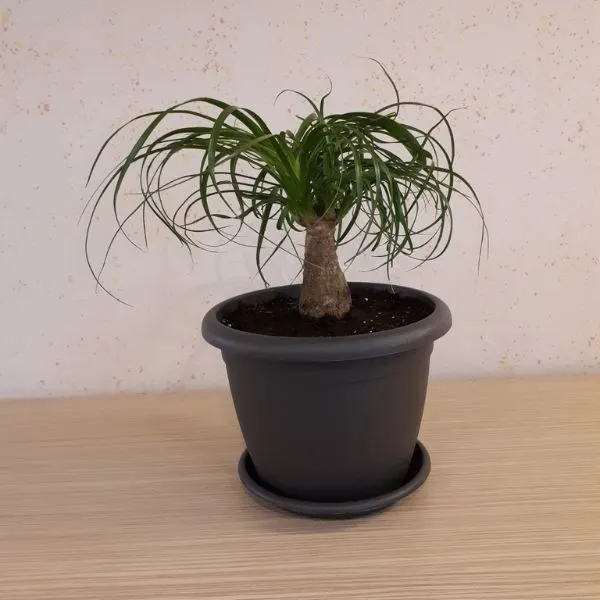
Ponytail palm trees aren’t palm trees at all but are succulents. The bulb that grows at the bottom of the trunk stores water.
These plants can stand the humidity a crested gecko needs, but they don’t need to have wet roots. In fact, they do better in pots because if the roots are allowed to spread out, they can end up getting too wet.
The crown of ponytail palms can hold geckos who like to climb on these plants, but the thin blades of foliage are too flimsy to hold anything. If you can let these plants’ roots dry out enough they will make a good plant for your gecko.
22. Seemannia Sylvatica
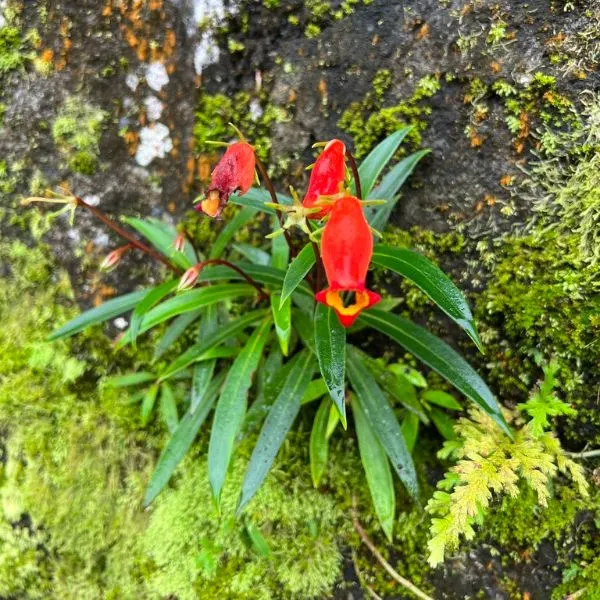
This plant doesn’t get very tall, only about a foot high, but it spreads rapidly. They will fill out as far as their roots can reach, so you might not want to plant anything else with this plant.
The great thing about these plants is the constant supply of dainty flowers they produce. The seemannia sylvatica sprouts red, tube-like flowers all year long that your gecko will enjoy.
They like a lot of water, and can even tolerate some standing water. If you happen to forget to water them for a few days, they can bounce back very quickly.
They do well in bright or low light so they are great companions for cresties.
23. Jade Plant

The jade plant, or money tree as it is sometimes called, is an emerald green succulent.
These plants don’t like to swim in water or get too dry. In order to water jade plants correctly, only water them when the top inch or so of soil is dry.
Jade plants like a moderate amount of light and can handle the humidity needed for crested geckos. They have sturdy leaves and stems that can easily take a climbing, curious crestie.
You can trim jade plants if they get too big or if you want them to be more compact. You can even grow more jade plants directly from cuttings.
24. Silver Pothos
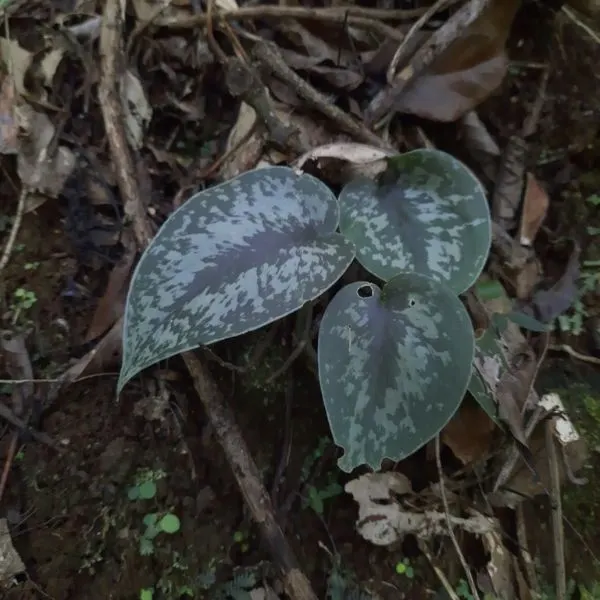
Silver pothos is a vining, climbing plant that has broad, colorful leaves your gecko will love climbing on and all around. Place this plant wherever you want broad leaves and climbing vines.
The silver pothos can survive in most lighting conditions, it likes high humidity, but it needs well-draining soil. They come from tropical regions so they like deep watering, but can’t deal with constantly wet roots.
They are fast-growing plants and can be easily trimmed to keep them in their place. You can even propagate the cuttings by setting them in a glass of water until roots appear.
Just plant them in the soil after you see roots and you’ll have more silver pothos plants.
25. Manaus Begonia
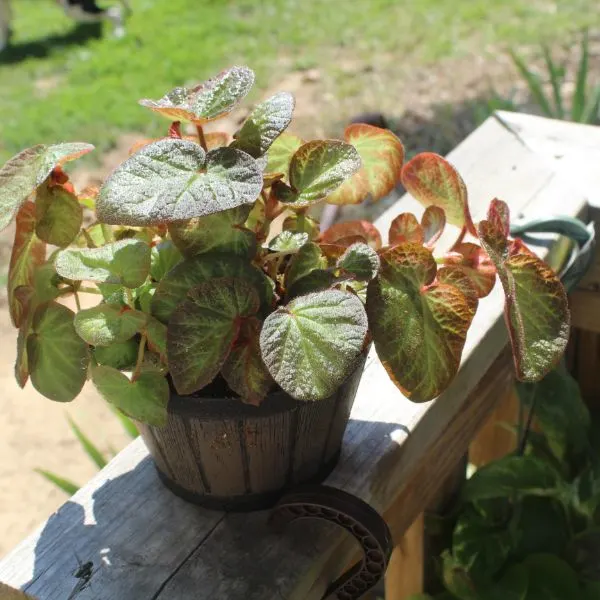
While the manaus begonia is a good plant for your crested gecko, it will need some special care.
This plant has thick, furry, soft leaves that don’t like to get wet. The manaus begonia doesn’t grow very tall and needs to be kept under decent shade.
The leaves will get spots on them and eventually fall off if they stay wet. This can sometimes present a problem because cresties like to be misted to keep the humidity high.
To overcome this, plant manaus begonia under bigger plants like the petra, or put them in pots and take them out when you mist.
26. Shingle Vine
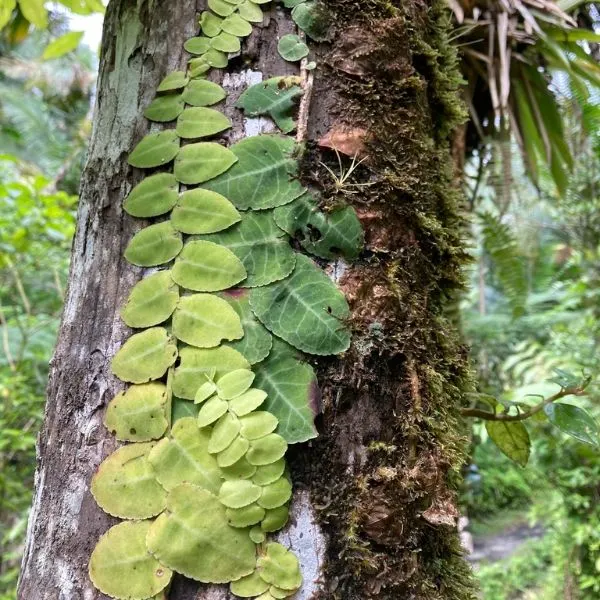
Shingle vines are quick climbers that will grow up near any surface. They produce alternating, close leaves that look like a green set of shingles.
They are perfect for the crested gecko habitat. They like high humidity, moist soil, and warm temperatures.
These plants do like bright light, so plant them in the sunniest spot in the enclosure, or under the light if you have one in your tank.
27. Dieffenbachia
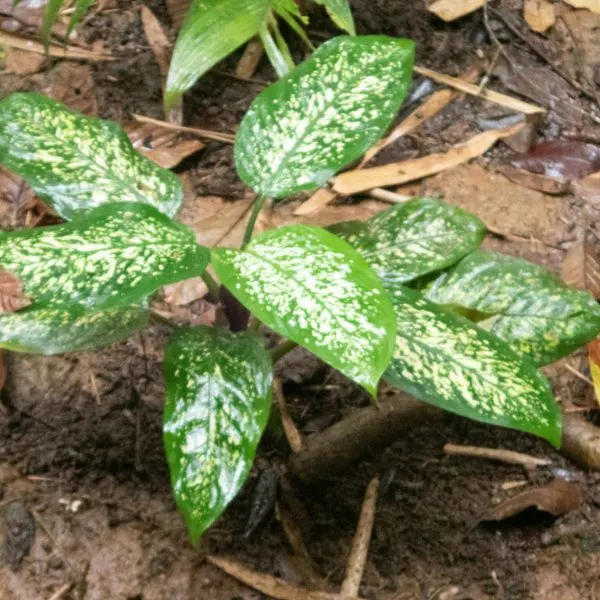
With its upright growing habit and broad, green, and white leaves, the dieffenbachia provides both hiding places and climbing areas for your crested gecko. They do well in low light settings and like humidity.
Be sure to let the soil dry out a little before watering them again. Overwatering is one sure way to ruin these plants.
They grow fast and can reach a few feet tall in just one year. Trim the dieffenbachia to keep it under control.
28. Rubber Tree
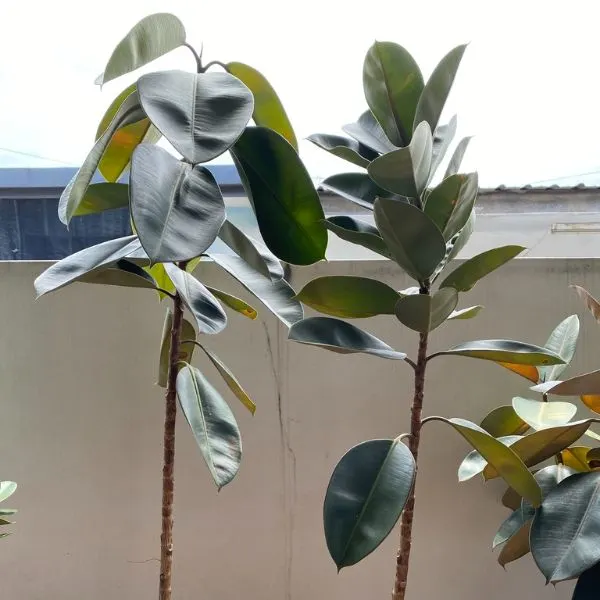
The rubber tree, sometimes known as ficus elastica, is a popular houseplant. It has thick, broad, dark green leaves and is known for its ability to purify the air.
They can grow very large, and their leaves can be larger too, so they should be reserved for only the largest of crestie enclosures. These plants need at least six hours of light, so plant them directly under the light in the tank or near a sunny window.
Other notes on care include letting the soil dry out before watering again.
29. Alocasia
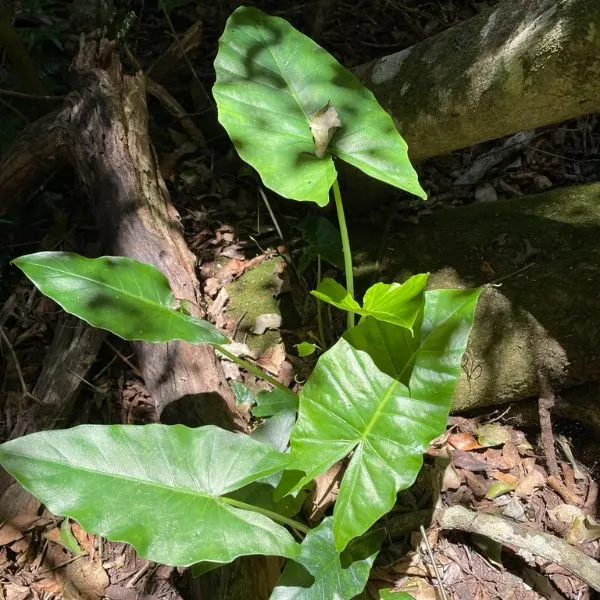
Alocasia plants can get very big, they aren’t called elephant ears for nothing! Fortunately, there are varieties that don’t take over your entire room, but they still grow broad, fantastic-looking leaves.
One leaf is big and strong enough to hold several crested geckos. These plants like medium light and well-drained soil. Let them dry out before watering again.
These plants are pretty heavy feeders while they are growing, and may need some pruning to keep them contained or they could crowd out any other plants in your enclosure. Be sure to feed these plants with an organic fertilizer once a month or every other month.
30. Snake Plants
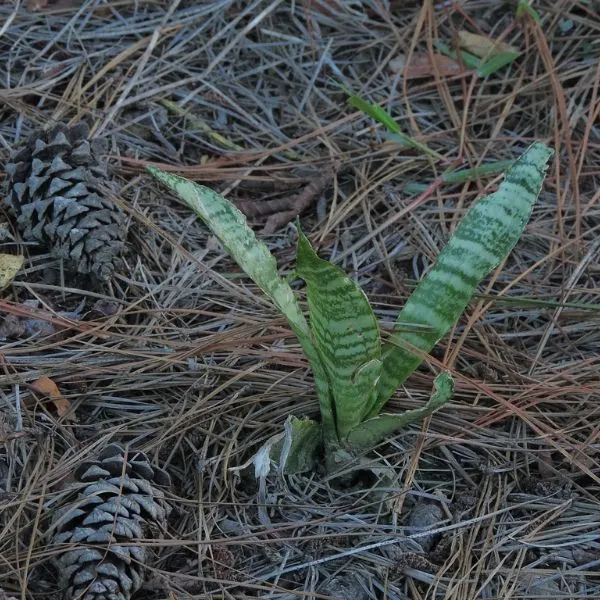
These plants have several different names, but they all have the same thick, upward-growing, patterned leaves. These plants aren’t the best for climbing but they add hiding places and vertical visual appeal.
When it comes to maintenance, snake plants don’t require much. These plants are very hardy.
They don’t need much light, can handle plenty of humidity, and only need to be watered when the soil has dried out.
31. Prayer Plant
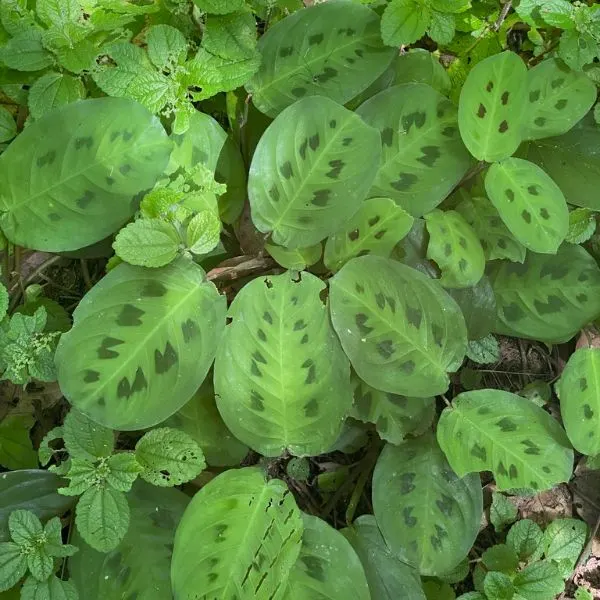
The prayer plant is named so because the leaves close up at night like they are in prayer, then they unfold in the morning. These plants have big, waxy leaves that are great for climbing on and hiding under.
The prayer plant does require a bit more maintenance than many others on this list. They like humidity, but the leaves don’t like to get wet.
They need low light, as bright light can stunt their growth, and prayer plants need well-draining soil that is kept moist. Aside from being relatively fickle about light and water, this plant is a beautiful addition to your enclosure.
32. Philodendron
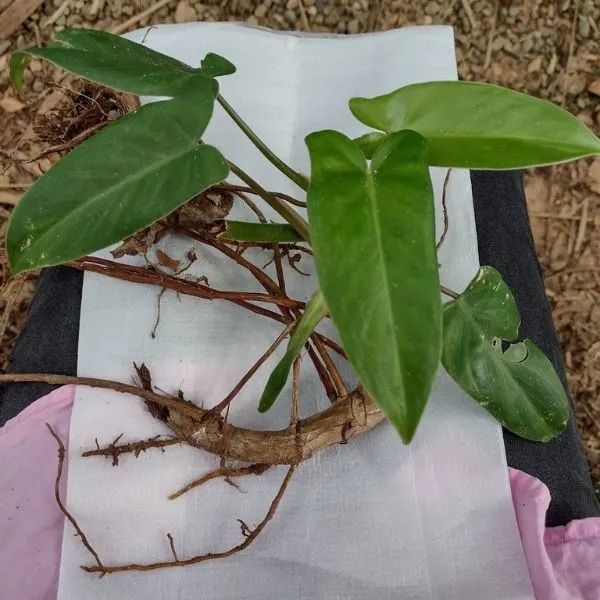
Philodendrons can be mounding plants or vining types.
They can be left in pots and hung up to trail down, left on the ground to create a mounding plant, or trained to grow on branches. There’s really not much this plant can’t do.
As long as they get the right care, philodendrons will provide years of climbing and hiding spots for your crested gecko. They need indirect light—direct sunlight can cause brown spots—moist but not wet soil, and plenty of humidity.
Philodendrons are fast-growing plants that can spread or climb quickly. Trim them as needed to keep them under control.
33. Peperomia

These plants encompass a huge genus of over 1000 plants so they can look very different from one another.
Their leaves can be solid, variegated, small, large, thick, thin, or something else altogether. One thing they all have in common is they are easy to care for.
Peperomia can grow well in loose soil like an orchid mix but can take well to a loose potting mix combined with sphagnum moss or vermiculite. They are a type of succulent so they only need water when the soil dries out.
Give peperomia plenty of bright but indirect light, and a little water when it’s dry, and this plant will be happy. Most of these plants don’t grow very tall so they will often make a good ground cover.
Considerations For Planting Live Plants In A Crested Gecko Tank
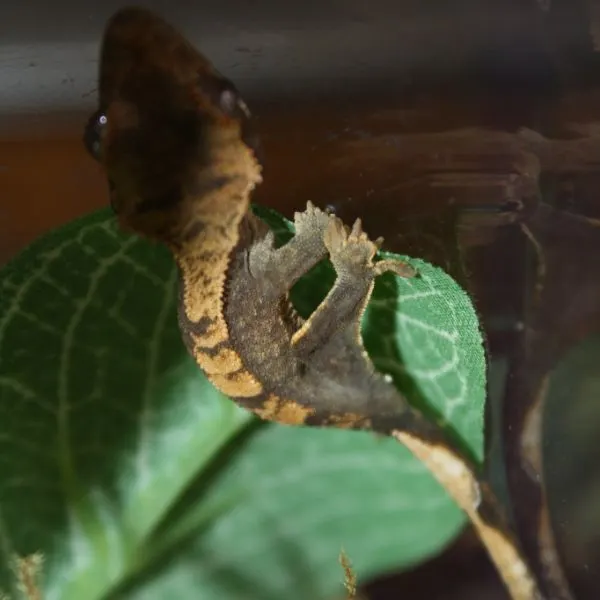
When you are planting live plants in your crestie’s tank, you will need some kind of light for the plants. While most cresties can deal with dim lighting, you’ll need to provide a full spectrum of light for your plants.
You can get the light from a window, or an artificial source. Remember that crested geckos don’t have eyelids, they like to find shady areas or hides to sleep and get away from bright lights.
Make sure they have plenty of places to escape bright light if the plants require that.
A Word About Substrate
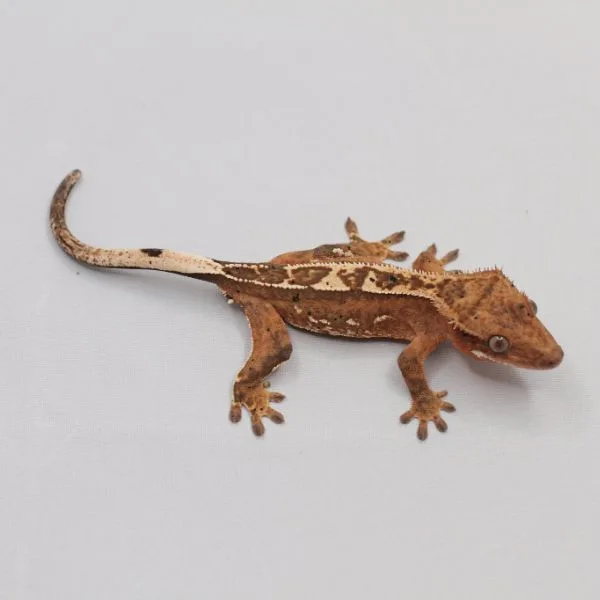
Almost all of these plants won’t survive if their roots are submerged in water.
You will have to add a layer of the loose, draining substrate to your tank. Either loose gravel or sand will help to let excess moisture drain down.
Alternatively, you can simply keep the plants in pots, remove them to water them, and replace the pots after they have been sufficiently watered. Potting your plants will also keep aggressive plants from overpowering others.
While planting live plants or pots, be sure to cover the loose soil. Additives to potting soil like vermiculite, and pearlite can cause impaction if your crestie accidentally consumes some.
To avoid this, cover the soil with something like a layer of sphagnum moss, coconut coir, or a thick layer of moss.
Only Use Organic Fertilizers
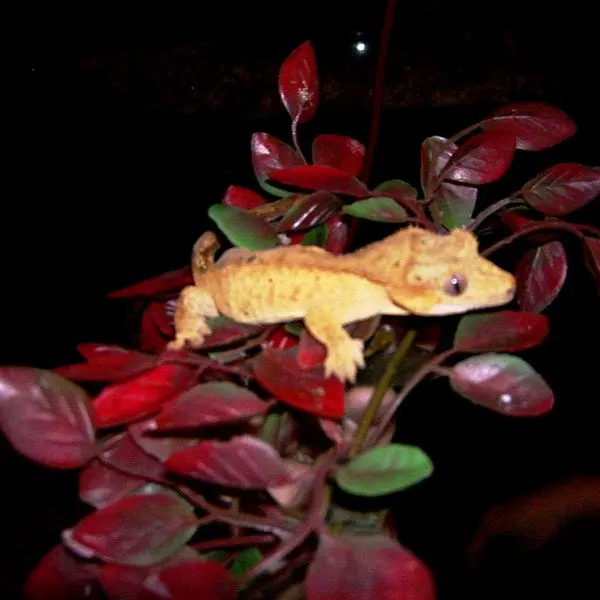
Indoor plants need occasional fertilizing.
While situated in pots or indoors, they don’t get much organic matter that breaks down into nutrients for the plants. This is remedied by using fertilizer, but most plant foods have a lot of harmful chemicals.
Always look for organic alternatives when using fertilizer for plants in your crested gecko’s enclosure. These will be safer for your reptiles.
Espoma 8 Ounce Concentrated Organic Indoor Plant Food is a great organic fertilizer that is safe for both your indoor plants and your crested gecko pets.
FAQ
Is moss safe for crested geckos?
Moss is safe for crested geckos and it will help to cover loose potting soil moss helps maintain high humidity in the tank.
Can crested geckos have fake plants?
Crested geckos in the wild live among the trees and love to have places to climb and hide among vegetation. If you don’t want the hassle of live-growing plants, fake plants are a great, low-maintenance alternative. They still let your crestie climb and hide, but you also don’t have to spend the time caring for live plants.
Will crested geckos eat live plants?
Crested geckos are omnivores and will sometimes nibble on plants in the enclosure. They won’t eat enough of the plant to hurt it, and all of the plants listed above have been deemed safe and non-toxic for cresties.
Final Words
Crested geckos need plants in their terrarium to keep them healthy. While it’s perfectly safe and acceptable to use artificial plants, live plants are more attractive and give the feel of their natural habitat.
The drawback to using live plants is the time and care that are needed to keep live plants. You also need to make sure different plants are compatible when it comes to lighting, soil, and water needs.
In the end, there is no wrong or right way, as long as you provide the best care possible to your crested gecko.
More Crested Gecko stuff
- A guide on how to care for a Crested geckos
- Types of Crested geckos
- How much do crested geckos cost?
- A How to guide on breeding Crested geckos
- A list of the best foods for crested geckos
- A guide on choosing the best substrate for crested geckos
- How to create a Crested gecko setup
- Differences between Crested geckos and Leopard geckos
